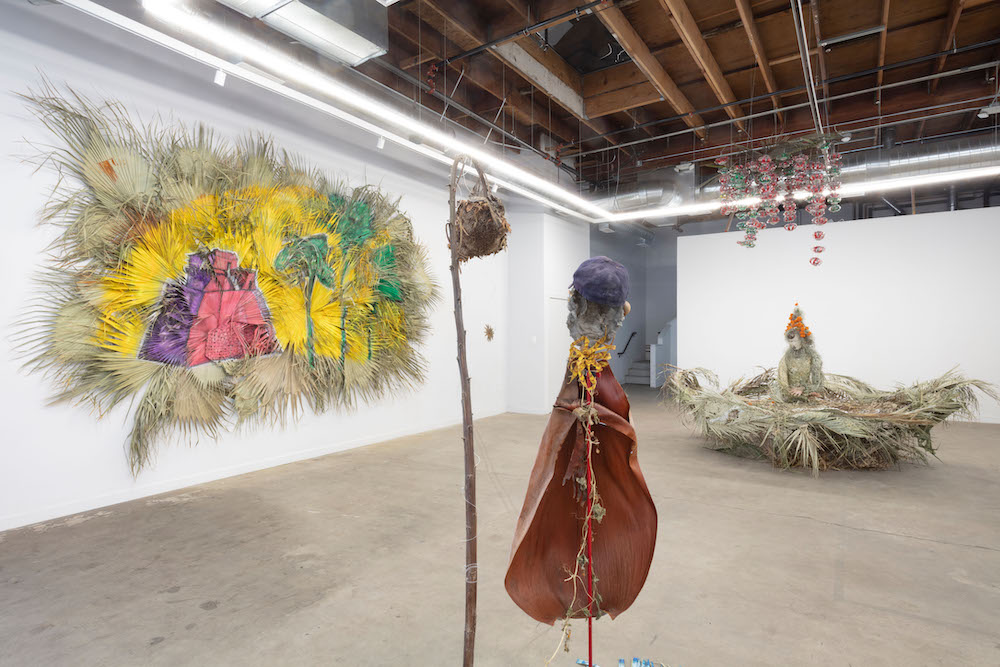In her inaugural solo exhibition “All in Time” at Murmurs Gallery, sculptor and sound artist Maria Maea braids palm fronds, milkweed, rebar, chicken wire and—most importantly—radical community. One can hardly even call the show “solo,” although it deserves the same celebration and notation: in an entirely non-performative gesture of communality, Maea called upon her closest family members to help weave the exhibition’s massive palm sculptures, wall works and baskets. Maea not only allocated the majority of production funds to go toward their labor, but she even dedicated an entire gallery room just for her mom, Susan Tuilaepa, to exhibit the traditional Samoan garments she fabricates as part of her business, Taõpa Productions. In this smaller space, a reverberant sound piece features recordings of the conversations Maea and her family members shared while weaving together, something Maea taught herself via YouTube over the course of 2020, but that brought the family together to chat and reminisce as they prepared for the exhibition.
In “All in Time,” we see the culmination of these dynamic and storied pieces that combine structural bases of rebar, concrete and chicken wire with living and dried plants. Many are, reductively, sculptural portraits of the very family members who were so intimately involved in the exhibition, summoned in materials that so astutely capture the contradictory beauty of Los Angeles—at once encased in concrete and simultaneously busting free. Their faces, concrete casts that capture moments of serene benevolence, are adorned with dried marigolds and an old, Long Beach ball cap. The figures look out toward one another from their respective perches throughout the space, connecting further via the ephemeral reaching of the plants from which their torsos are woven.

Maria Maea, “Untitled (Newphew),” 2020. Photo by Josh Schaedel, courtesy of Murmurs Gallery.
In one corner, a draft has gathered hundreds of furry milkweed seed pods that found their way free from what I find to be the most compelling piece of the show: a portrait of her nephew originally assembled in her home garden, around which, over months, milkweed and jasmine climbed. In order to transport the sculpture to the exhibition space, the roots of these plants were carefully dug and brought along, and the entire unit was placed beneath a single UV light. At the opening, bright orange aphids populated their leaves, much to my and everyone else’s delight (that night and during her install, a stray cat also refused to leave the gallery). Where others might discard materials or relationships, Maea refuses to retreat into the vicissitudes of individualism or fast consumption that is rampant in a city built partially on the film industry. The insistent inclusivity she demonstrates at Murmurs represents the core logic of Maea’s practice, which firmly privileges process over product. I can’t help but dreamily wonder, what would happen if more exhibition spaces were founded on principles of radical communality? What do we discover about ourselves, each other, and our collective and divergent worlds when we divest ourselves from the obsession with celebrity and participate, rather, in a celebration of the people and places who made us who we are? With any luck—all in time—we’ll find out.


